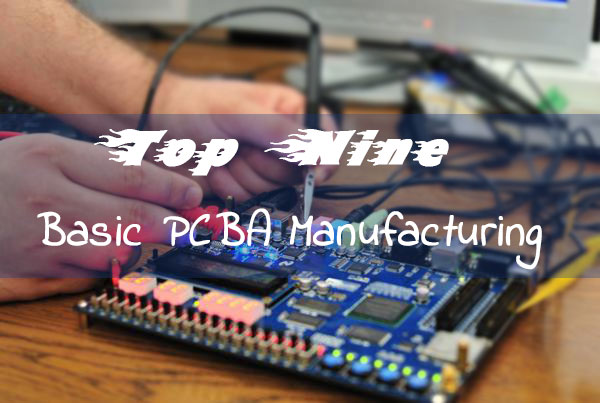
The reason why 4MCPCB discuss PCBA manufacturing techonology
Good PCBA supplier must have got everything you need for quality PCBA.
Almost each PCBA factory have announce they can provide quality PCBA.
Previous post we have discussed how to judge a good PCBA supplier.
In this paper, we are going to discuss some basic PCBA manufacturing technology.
To learn basic PCBA manufacturing technology first
There were so many PCBA manufacturing technologies.
Some are simple, but the rest is very complex.
How to understand PCBA manufacturing process more fast?
Our rich PCBA experts recommend top nine basic PCBA manufacturing technologies.
Frank wants to clear that here nine PCBA technology just the basic.
If you want to learn more PCBA manufacturing info, please follow our updates.
Top nine basic PCBA manufacturing technologies introduce
Here we just simple introduce those nine PCBA manufacturing technologies.
If you have additional questions, please do not hesitate contact us.

#1 PCB Mmanufacturing technology: Surface Mount Technology
Surface-mount technology (SMT) is a method for producing electronic circuits in which the components are mounted or placed directly onto the surface of printed circuit boards (PCBs). An electronic device so made is called a surface-mount device (SMD).
#2 PCB Mmanufacturing technology: Through hole
Through-hole technology, also spelled “thru-hole”, refers to the mounting scheme used for electronic components that involves the use of leads on the components that are inserted into holes drilled in printed circuit boards (PCB) and soldered to pads on the opposite side either by manual assembly (hand placement)
#3 PCB Mmanufacturing technology: Intrusive reflow
The alternative of using solder paste and reflowing all the components is attractive, and cost reduction and process simplification are major driving forces behind what is called ‘intrusive reflow’ or (more descriptively) ‘pin-in-paste’ or ‘Pin-In-Hole Reflow’ (PIHR).
#4 PCB Mmanufacturing technology: Wave/selective wave soldering
Selective soldering is the process of selectively soldering components to printed circuit boards … Selective aperture tooling over wave solder: These tools mask off areas previously soldered in the SMT reflow soldering process.
#5 PCB Mmanufacturing technology: Press fit
An interference fit, also known as a press fit or friction fit is a fastening between two parts which is achieved by friction after the parts are pushed together, rather than by any other means of fastening.
#6 PCB Mmanufacturing technology: Double/single-sided reflow processing
Double sided Metal core PCB boards are assembled by first processing the first side followed by the second but there are considerations that need to be made.
#7 PCB Mmanufacturing technology: Rework and repairs
Rework – Bringing a non-conforming part back into conformance by simply reprocessing a prior sequence.
Repair – Bringing a non-conforming part back into conformance using methods outside the original process.
#8 PCB Mmanufacturing technology: Leaded and lead-free assembly
The RoHS Directive lists the hazardous materials that are not to be used in the RoHS PCB assembly process including printed circuit boards, discrete components, or solder joints.
#9 PCB Mmanufacturing technology: Water soluble and no-clean processes
No-clean solder paste was supposed to obviate the need to clean circuit boards.
